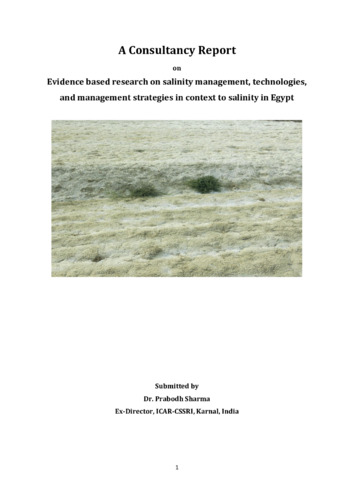A consultancy report on evidence based research on salinity management, technologies, and management strategies in context to salinity in Egypt
Abstract
Soil salinity is a major challenge in arid and semi-arid regions that severely affects agricultural production. Increasing global population, anthropogenic activities, unscientific management practices, and climate change exacerbate the problem. Salt affected soils are present in over 100 countries worldwide and are more common in arid and semi-arid climates. About 932 million hectares are affected by salinization and alkalinization worldwide, with 581 and 351 million hectares affected by sodicity and salinity, respectively (Table 1). Soil salinity already covers 20% of total cultivated lands and 33% of irrigated agricultural lands worldwide. About 40-60% of the world's salt affected lands are saline and sodic in nature. The Asia Pacific region, which includes Australia, has the highest extent of salt-affected soils. Countries predominantly affected by land salinization include Argentina, Australia, China, Egypt, India, Iran, Iraq, Pakistan, Thailand, the former Soviet Union, and the USA.

